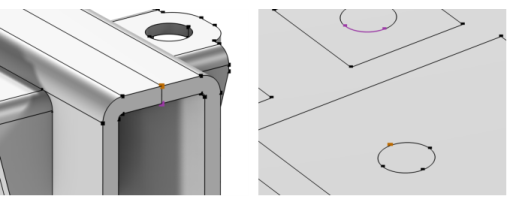Use a Distance Measurement (

) node to measure the distance between two points (shown in
Figure 7-8) or between a point and an edge. It generates parameters for the measured distance that can be used in subsequent nodes in the geometry sequence or when setting up the physics, which is useful when running a parametric sweep that changes dimensions in the geometry. The resulting distances also appear in the
Parameter Values section.

The Distance Measurement creates a parameter for the smallest Euclidean distance between a vertex and an edge, a boundary (2D), or a point. It also creates parameters for the corresponding vectorial distance.
To add a Distance Measurement node, optionally select points in the Graphics window, then choose one of the following:
Click the Active button to toggle between turning ON

and OFF

the entity selections. Select a point (vertex) in the Graphics window as the first entity from where to measure the distance. The point then appears in the
First vertex selection. If the geometry sequence includes user-defined selections above the
Distance Measurement node, choose one of the selection nodes from the list next to
First vertex.
For the second entity, select Edge (3D only),
Boundary, or
Point (default) from the
Geometric entity level list. Select an edge, a boundary, or a point (vertex) in the Graphics window as the second entity of the measurement. The entity then appears in the
Second entity selection. If the geometry sequence includes user-defined selections above the
Distance Measurement node, choose one of the selection nodes from the list next to
Second entity. Select the
Extend entity to consider the full line or circle when calculating the distance to a straight or circular edge.

